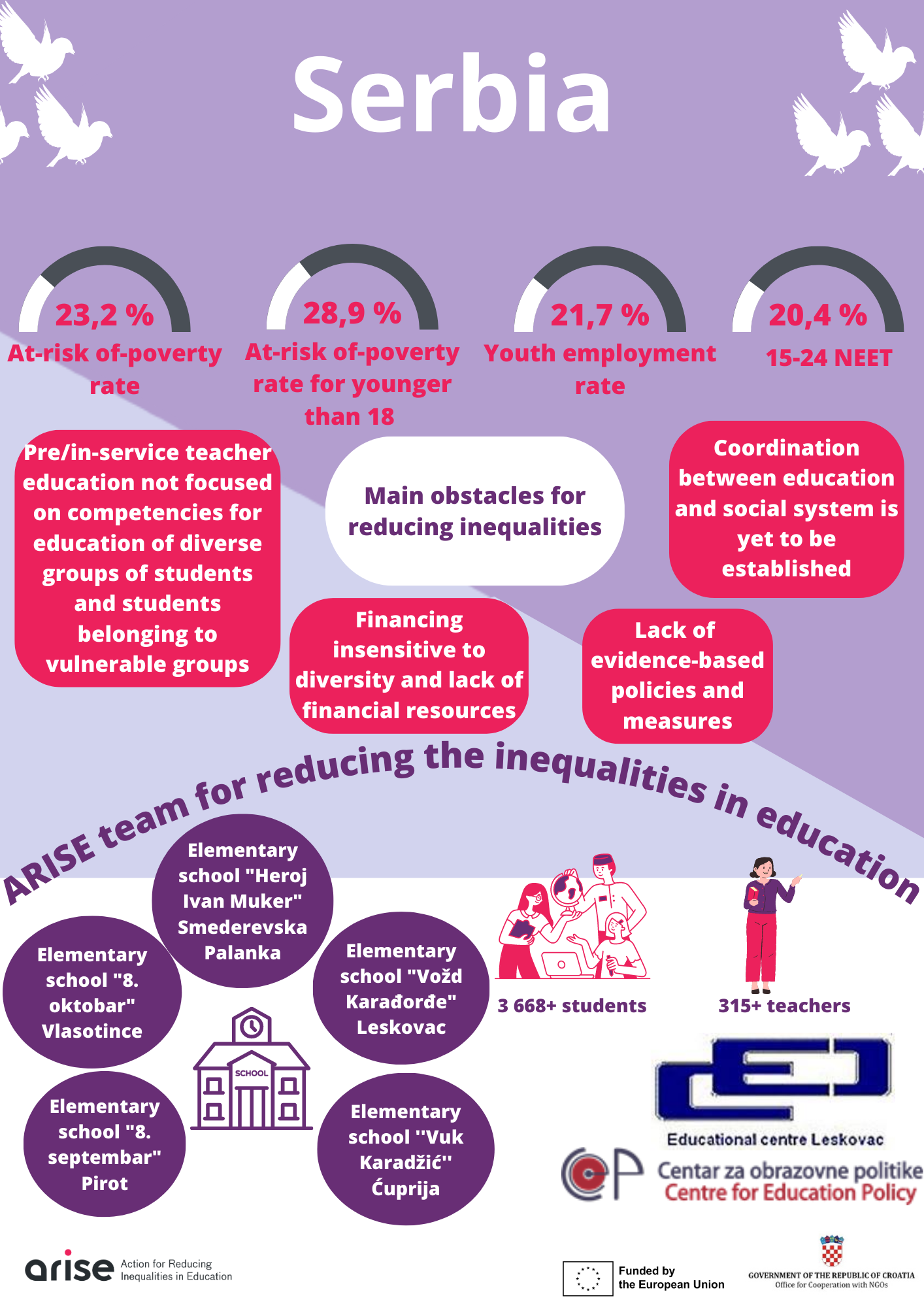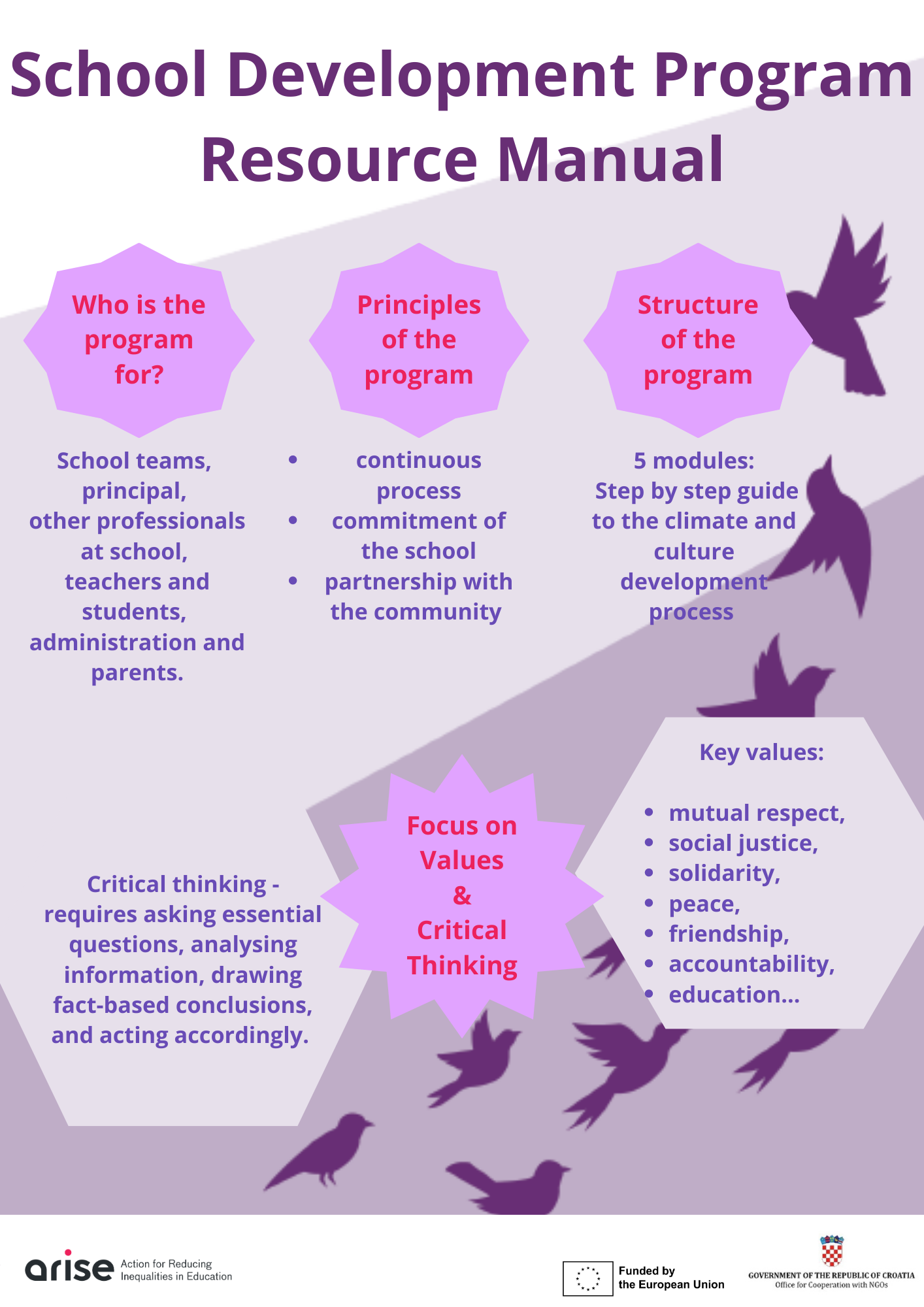Even though equity is an integral part of the legislation in Serbia and one of the essential parts of the strategic and legislative framework in the education sector, there are still several main obstacles preventing it from being achieved in practice. Learn more in the article.
Equity is an integral part of the legislation in Serbia and it is one of the essential parts of the strategic and legislative framework in the education sector, however, the national report for Serbia revealed several indicators of inequalities. For example:
- Poverty is one of the major sources of inequalities: at-risk of-poverty rate in Serbia is 23,2% and even higher for younger than 18 – 28,9%1
- Employment status & educational attainment: Youth employment rate in Serbia is 21,7% while rate of youth aged 15-29 not engaged in education, employment or training (NEET) is 20,4%.
Moreover, the report also identified main obstacles connected to this issue:
- Financing is still insensitive to differences between and within schools and support measures at the local level often cannot be implemented due to the lack of financial resources.
- Initial teacher education does not equip future teachers with competencies for work with diverse groups of students including working with students from vulnerable groups.
- Teachers very frequently do not recognise low SES students as students from vulnerable groups who need additional educational support.
- Development of evidence-based policies and measures is rather weak - data collected during schools’ external evaluation and self-evaluation are not entirely used for the school work improvement; Education Management Information System is not fully functional and needs to be connected to other sectors’ statistical databases.
- Appropriate coordination between education and the social system is yet to be established.
A more elaborated overview of the challenges regarding the inequalities in education in Serbia is available in the policy brief, as well as good policy examples and recommendations for further improvement of policies.
Significant relevance for reducing the inequalities in education is on the school and teachers. Within the ARISE project, we have developed a School Development Program Resource Manual that is intended primarily to empower schools in the process of creating a safe environment where every child feels accepted and develops the competences, he or she needs for living and creating a society based on universal human values, mutual respect and support.
In Serbia, ARISE partner organization is Centre for Education Policy (CEP), an independent multidisciplinary research centre that provides professional support to decision makers and practitioners in developing, implementing and evaluating policies in the field of education.
CEP is implementing ARISE School Development Program in five schools:
- Elementary school "Vožd Karađorđe" Leskovac
- Elementary school "8. oktobar" Vlasotince
- Elementary school "8. septembar" Pirot
- Elementary school "Heroj Ivan Muker" Smederevska Palanka
- Elementary school ''Vuk Karadžić'' Ćuprija
Overall, more than 3 668 students and 315 teachers in Serbia are direct or indirect beneficiaries of the step-by-step program focused on school climate and culture development.
School Development Resource Manual is available in English, Albanian, Bosnian, Macedonian and Serbian language.
1 Source: Statistical Office of the Republic of Serbia



